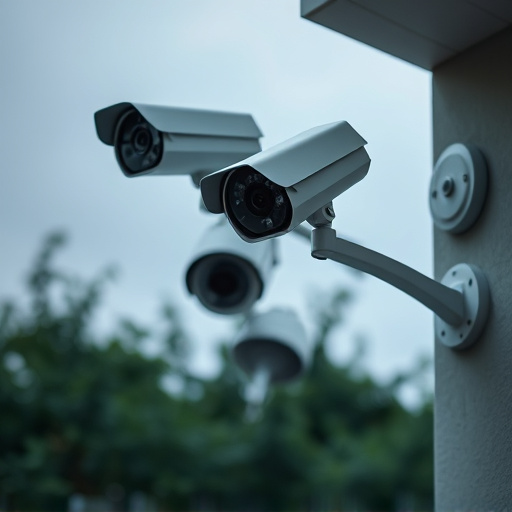Fake security cameras, while appearing functional, lack crucial components for recording or monitoring. Their primary role is psychological deterrence, creating an illusion of enhanced security. While they may discourage criminals, their effectiveness is limited to visual deception. Placement and realism are essential, but legal and ethical concerns arise regarding privacy and potential misuse. True security involves investing in reliable systems, motion lighting, and alarm mechanisms for comprehensive protection against unauthorized entry.
Understanding Fake Security Cameras: What They Are and How They Operate
Fake security cameras, also known as dummy or decoy cameras, are designed to look like real surveillance equipment but lack functional components essential for video recording and monitoring. These devices operate on a simple principle: they mimic the appearance of active security systems, deterring potential thieves or vandals, without actually capturing any footage. While their visual presence may convey a sense of enhanced security, the question arises—do fake security cameras work?
The effectiveness of these cameras lies in their ability to create an illusion of thorough monitoring. Criminals, upon seeing such devices, might be deterred from carrying out malicious activities due to the perceived increased risk of getting caught. However, it’s crucial for individuals seeking actual security solutions to understand that fake cameras offer only a psychological barrier and do not contribute to real-time surveillance or evidence collection.
The Effectiveness of Fake Security Devices in Deterring Crime
The effectiveness of fake security devices, particularly artificial cameras, in deterring crime has been a subject of interest and debate. While real security cameras have long been considered a powerful tool to discourage criminal activity due to their ability to provide visual evidence and monitor potential threats, fake security setups offer an intriguing alternative solution. These realistic-looking replicas can be strategically placed in various environments, from homes and businesses to public spaces, creating the illusion of enhanced surveillance. This psychological impact is significant; criminals may be less likely to attempt illegal acts if they believe they are being watched, even if the devices do not capture actual footage.
The success of fake security cameras lies in their ability to manipulate human perception. When installed appropriately, these decoys can create a sense of insecurity and uncertainty among potential perpetrators, leading them to reconsider their actions. Research suggests that visible surveillance equipment, whether real or simulated, can reduce crime rates, especially in areas prone to theft or vandalism. However, it’s essential to note that the effectiveness also depends on factors like placement, realism, and overall security system integration, ensuring a comprehensive approach to crime prevention.
Advantages and Disadvantages of Using Fake Security Cameras
While do fake security cameras work as a deterrent for potential intruders, they offer several advantages in terms of cost-effectiveness and ease of installation. These imitation devices can be a great option for homeowners and businesses on a budget, providing a visual impression of enhanced security without breaking the bank. Fake cameras are simple to set up, often requiring no more than mounting them at strategic locations around your property or establishment. They also serve as an effective way to confuse would-be thieves, as it’s hard to distinguish between genuine and fake equipment.
However, there are some disadvantages to consider. The primary concern is that while they may deter casual intruders, determined criminals might not be fooled. Advanced users could recognize the difference, leading them to attempt other entry points. Additionally, the quality of these fake cameras can vary widely; lower-quality models might not provide clear footage or have limited range, rendering them less effective as a security tool. Ultimately, their success depends on the level of realism and the specific needs of the location they’re deployed in.
Legal Implications and Ethical Considerations of Dummy Camera Placement
The placement of dummy or fake security cameras, while seemingly harmless, raises significant legal and ethical concerns. In many jurisdictions, there are strict regulations regarding surveillance and privacy, and using fake cameras can blur the lines between legitimate security measures and deceptive practices. The effectiveness of these dummy devices in deterring crime is debatable; however, their potential to mislead individuals into a false sense of security is a compelling issue. If not implemented responsibly, it could lead to unintended consequences, such as violating someone’s privacy rights or causing distress if genuine threats are overlooked due to reliance on fake cameras.
Ethically, the use of dummy cameras might exploit people’s fears and create an environment of mistrust. It raises questions about transparency in security measures, especially in public spaces. While they may provide a psychological benefit by giving individuals a sense of safety, they should be used judiciously to avoid potential legal pitfalls and maintain societal trust. Understanding the limitations and ethical boundaries surrounding these devices is crucial when considering their deployment as part of a security strategy, particularly when investigating whether do fake security cameras work effectively.
Alternatives to Fake Security Cameras: Enhancing Home or Business Safety
While fake security cameras might seem like a quick and inexpensive solution, they often fall short in actually enhancing security. True safety comes from reliable, high-quality surveillance systems designed to deter crime and provide actionable footage. Instead of relying on decoys, consider investing in real security measures such as motion-activated lighting, security gates, or alarm systems interconnected with a monitored service. These alternatives not only offer better protection but also provide peace of mind knowing that your home or business is truly secure.
Combining these physical deterrents with quality surveillance cameras, both genuine and hidden, creates an even stronger layer of defense. Hidden cameras can serve as a valuable tool for monitoring sensitive areas while visible security systems act as a powerful psychological deterrent to potential intruders. By integrating multiple layers of protection, you create an environment that is far less attractive to unauthorized entry.
